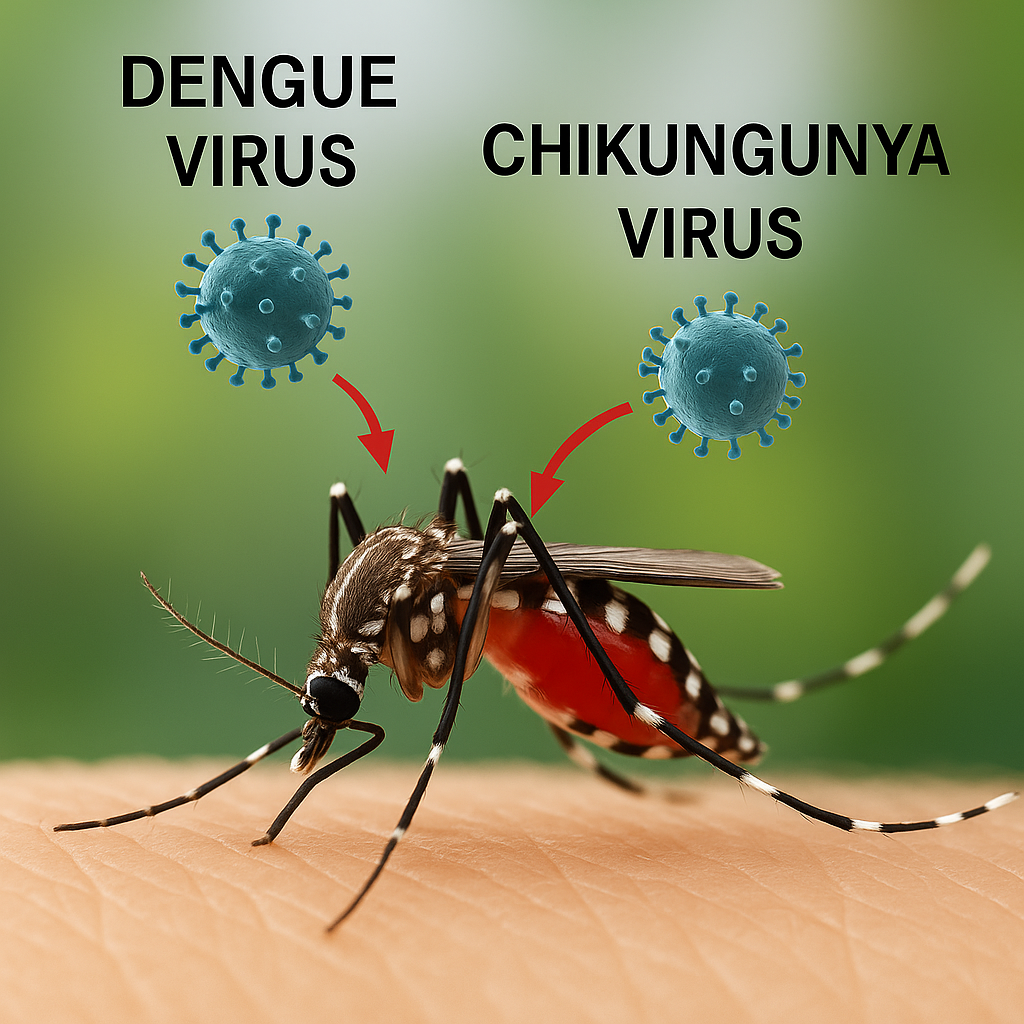What Is the Difference Between Dengue and Chikungunya?
Origin
Chikungunya was historically mistaken for dengue until an outbreak occurred on the Makonde Plateau near Tanzania. Only then was it recognized as a separate disease.
Chikungunya is caused by the Chikungunya virus (CHIKV), transmitted by two species of Aedes mosquitoes—the same genus responsible for dengue. The virus was first isolated in 1953 by R.W. Ross. In India, chikungunya was historically less of a concern than dengue, particularly in the northern regions. However, reported cases have risen significantly since 2016.
What Do Dengue and Chikungunya Have in Common?
Both are mosquito-borne viral infections transmitted by Aedes mosquitoes, notably Aedes aegypti and Aedes albopictus. These diseases affect millions of people annually across dengue- and chikungunya-endemic regions, driving demand for POCT rapid tests and multiplex combo test kits.
Common Symptoms of Dengue and Chikungunya
Both viral infections share several overlapping symptoms, including:
-
High fever
-
Headache
-
Joint and eye pain
-
Skin rash
-
Fatigue or lethargy
These symptoms are often misdiagnosed without accurate IVD testing. For healthcare providers and IVD channel partners, early-stage detection kits play a critical role in improving patient outcomes.
How to Differentiate Between Dengue and Chikungunya
| Feature | Dengue | Chikungunya |
|---|---|---|
| Virus Family | Flaviviridae (Flavivirus) | Togaviridae (Alphavirus) |
| Incubation Period | 3–7 days | 1–12 days |
| Duration | 4–7 days (can extend in severe cases) | 1–2 weeks (joint pain may persist for months) |
| Key Symptoms | Bleeding, breathing issues, low platelet count | Severe joint pain, arthritis-like symptoms |
| Rash Location | Limbs and face | Face, palms, feet, limbs |
| Complications | Hemorrhagic fever, shock, organ failure | Chronic arthritis, rare neurological issues |
Final Note
With overlapping symptoms and rising co-endemicity, dengue and chikungunya require specific, sensitive, and rapid diagnostic tools to guide treatment and public health response. For global IVD suppliers and medical device importers, this represents a key area for product portfolio expansion.


